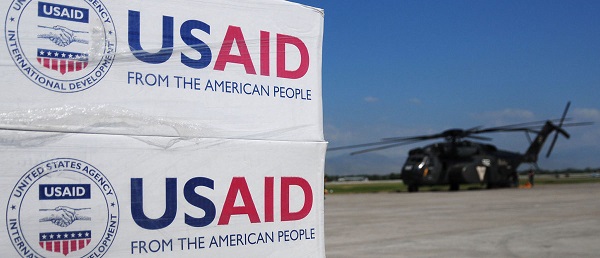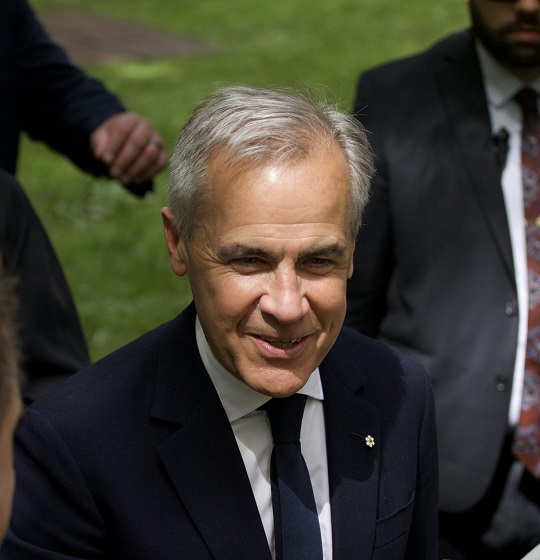Frontier Centre for Public Policy
To Truly Help Indigenous Communities Prosper, We Must Put the Economic Horse Before the Political Cart

From the Frontier Centre for Public Policy
Conservative leader Pierre Poilievre has surprised a lot of people by placing a real emphasis on his party’s relationship with Indigenous peoples. Not only has he recruited high-profile Indigenous politicians like Ellis Ross and Chief Billy Morin to be candidates, but he’s even addressed the annual meeting of the Assembly of First Nations.
As he thinks about how best to translate these efforts of engagement and outreach into a practical policy agenda, he ought to prioritize economic reconciliation over certain political reforms. This is a balance that the Trudeau government has failed to abide by.
In November 2021, Prime Minister Justin Trudeau issued a statement on the 25th anniversary of the final report of the Royal Commission on Aboriginal Peoples (RCAP)—a massive five-volume report containing 440 recommendations covering most areas of Canada’s Indigenous life.
The prime minister proudly stated his government followed through on one RCAP recommendation: In 2017, it established the Department of Crown-Indigenous Relations and North Affairs and the Department of Indigenous Services as separate departments.
Yet his government neglected—like others before it—a much more significant recommendation: the creation of economically viable and eventually self-sufficient Indigenous communities.
The result is that most Indigenous governments in Canada—even self-governing modern treaty governments—are no closer to achieving RCAP’s vision of self-sufficient Indigenous governments.
It reflects a consistent problem in the discourse about advancing progress towards the overall goal of reconciliation. Indigenous activists and scholars too often put the politics of self-government before economics.
They advocate for independent political institutions, but without a realistic economic plan, these institutions will not be free of federal economic paternalism.
They fail to put the political cart behind the economic horse.
Over 20 years ago, Dene leader Stephen Kakfwi told an interviewer that First Nations seeking self-government must first consider their community’s financial viability. No government in the world, he said, provided free housing, free education, and free government. Kakfwi wisely observed that this would not create self-reliant individuals, families, and communities.
So, what will ensure a path toward economic viability for Indigenous communities that leave the Indian Act? Long-term data on Indigenous communities provides answers.
The National Indigenous Economic Development Board (NIEDB)’s flagship Aboriginal Economic Benchmarking Report found a recurring positive correlation between greater control over land and resources and higher socio-economic outcomes.
The NIEDB’s research reveals Canada’s modern treaty process provides the greatest Indigenous economic freedom because it provides the most significant control over land and resources. Modern treaties are land claims agreements signed since the 1970s between the Crown and First Nations, in which Indigenous parties abandon reserves and federal oversight. They involve wide-reaching control over lands and resources and often self-governing institutions.
These agreements provide a favourable investment climate and create greater potential for economic development and growth by instilling certainty over rights to land and resources.
Consider two case studies, one in the U.S. and one in Canada, to understand this fully.
First is the 1971 Alaska Native Claims Settlement Act (ANCSA). The second is the 1984 Inuvialuit Final Agreement (IFA). Both agreements involved Northern Indigenous groups extinguishing rights and title in exchange for cash and full control over lands and resources. Both agreements created arm’s length corporate structures to make sound business and investment decisions for the community.
Through ANCSA, U.S. Congress provided Alaska Natives with a total cash settlement of $962.5 million and title to surface and sub-surface to 40 million acres.
ANCSA turned the Alaska Native communities into for-profit regional and village corporations with legal obligations to generate profits for their shareholders.
Alaska Natives would not allow these entities to become regular corporations. They banned selling and trading shares on the open market. They adopted ancestral restrictions on shareholder eligibility to prevent takeovers.
Alaska Native communities used their revenues to establish a fiscal relationship between all corporations that included resource revenue sharing.
As a result, ANCSA created a significant socio-economic change within the Alaska Native population and shifted from subsistence-based activities toward a more middle-class existence over a few decades.
The corporation’s economic power rested on natural resource wealth (oil and timber). However, wise investment of settlement monies and resource revenues into other businesses and ventures ensures future economic viability.
Now, turning to Canada.
The Inuvialuit of the Western Arctic signed the Inuvialuit Final Agreement (IFA) with the federal government. The IFA created two institutions, the Inuvialuit Regional Corporation (IRC) and the Inuvialuit Game Council to oversee wildlife. The IRC corporate structure encompasses six community corporations.
The Inuvialuit Development Corporation (IDC) was the IRC’s business unit. The IDC invested settlement monies into business ventures within and outside the settlement region, focusing on creating Inuvialuit jobs. The IDC created over 20 subsidiary businesses and joint ventures in seven major business sectors. They invested in construction, manufacturing, environmental services, transportation, tourism and hospitality, real estate, and petroleum servicing.
The Inuvialuit Investment Corporation (IIC) is the IRC’s second subsidiary. IIC protects Inuvialuit funds, earns a five percent long-term return, and manages Inuvialuit corporation investment funds. Inuvialuit Social Development Fund—the non-income generating part of the IRC—provides Inuvialuit housing, health, welfare, education, and traditional language services.
The IFA created significant socio-economic change within the Inuvialuit Settlement Region, paralleling changes within Alaska Native society after the ANCSA. The two communities differ because the promised Mackenzie Valley Pipeline project never materialized for the Inuvialuit while the Trans Alaskan Pipeline did.
One wonders how the Mackenzie Valley Pipeline could have economically improved the condition of the Inuvialuit.
So, can one conclude Indigenous communities cannot achieve economic viability without substantial natural resources? Not necessarily. Indigenous communities without substantial natural resources tend to adopt two other economic development strategies: 1) expanding land holdings, including valuable urban lands; and 2) developing high-value-added, reserve-based businesses and niche industries.
Studies by the Fraser Institute and the C.D. Howe Institute reveal that many First Nations in Canada have access to their own source revenues. A 2016 Fraser study found at least 100 First Nations at that time had access to their own source revenues that exceeded government transfers.
To replicate such successes, Ottawa must fundamentally re-orient its Indigenous policy.
The federal government—in working with First Nations seeking freedom from the Indian Act and reserve system—must develop realistic economic viability plans before signing agreements. Ottawa must place economic success and viability at the centre of its Indigenous policy approach. New agreements must include for-profit corporate structures. Ottawa must provide Indigenous communities with the fiscal tools they need to succeed, including self-taxation powers and the ability to easily expand their land base for economic purposes.
Finally, Ottawa must recognize that future Indigenous economic viability hinges on the future of Canada’s resource economy. Governments must abandon green transition policies that run counter to future Indigenous viability.
First published here.
Joseph Quesnel is a Senior Research fellow with the Frontier Centre for Public Policy
Frontier Centre for Public Policy
New Book Warns The Decline In Marriage Comes At A High Cost

From the Frontier Centre for Public Policy
Travis Smith reviews I… Do? by Andrea Mrozek and Peter Jon Mitchell, showing that marriage is a public good, not just private choice, arguing culture, not politics, must lead any revival of this vital institution.
Andrea Mrozek and Peter Jon Mitchell, in I… Do?, write that the fading value of marriage is a threat to social stability
I… Do? by Andrea Mrozek and Peter Jon Mitchell manages to say something both obvious and radical: marriage matters. And not just for sentimental reasons. Marriage is a public good, the authors attest.
The book is a modestly sized but extensively researched work that compiles decades of social science data to make one central point: stable marriages improve individual and societal well-being. Married people are generally healthier, wealthier and more resilient. Children from married-parent homes do better across almost every major indicator: academic success, mental health, future earnings and reduced contact with the justice system.
The authors refer to this consistent pattern as the “marriage advantage.” It’s not simply about income. Even in low-income households, children raised by married parents tend to outperform their peers from single-parent families. Mrozek and Mitchell make the case that marriage functions as a stabilizing institution, producing better outcomes not just for couples and kids but for communities and, by extension, the country.
While the book compiles an impressive array of empirical findings, it is clear the authors know that data alone can’t fix what’s broken. There’s a quiet but important concession in these pages: if statistics alone could persuade people to value marriage, we would already be seeing a turnaround.
Marriage in Canada is in sharp decline. Fewer people are getting married, the average age of first marriage continues to climb, and fertility rates are hitting historic lows. The cultural narrative has shifted. Marriage is seen less as a cornerstone of adult life and more as a personal lifestyle choice, often put off indefinitely while people wait to feel ready, build their careers or find emotional stability.
The real value of I… Do? lies in its recognition that the solutions are not primarily political. Policy changes might help stop making things worse, but politicians are not going to rescue marriage. In fact, asking them to may be counterproductive. Looking to politicians to save marriage would involve misunderstanding both marriage and politics. Mrozek and Mitchell suggest the best the state can do is remove disincentives, such as tax policies and benefit structures that inadvertently penalize marriage, and otherwise get out of the way.
The liberal tradition once understood that family should be considered prior to politics for good reason. Love is higher than justice, and the relationships based in it should be kept safely outside the grasp of bureaucrats, ideologues, and power-seekers. The more marriage has been politicized over recent decades, the more it has been reshaped in ways that promote dependency on the impersonal and depersonalizing benefactions of the state.
The book takes a brief detour into the politics of same-sex marriage. Mrozek laments that the topic has become politically untouchable. I would argue that revisiting that battle is neither advisable nor desirable. By now, most Canadians likely know same-sex couples whose marriages demonstrate the same qualities and advantages the authors otherwise praise.
Where I… Do? really shines is in its final section. After pages of statistics, the authors turn to something far more powerful: culture. They explore how civil society—including faith communities, neighbourhoods, voluntary associations and the arts can help revive a vision of marriage that is compelling, accessible and rooted in human experience. They point to storytelling, mentorship and personal witness as ways to rebuild a marriage culture from the ground up.
It’s here that the book moves from description to inspiration. Mrozek and Mitchell acknowledge the limits of top-down efforts and instead offer the beginnings of a grassroots roadmap. Their suggestions are tentative but important: showcase healthy marriages, celebrate commitment and encourage institutions to support rather than undermine families.
This is not a utopian manifesto. It’s a realistic, often sobering look at how far marriage has fallen off the public radar and what it might take to put it back. In a political climate where even mentioning marriage as a public good can raise eyebrows, I… Do? attempts to reframe the conversation.
To be clear, this is not a book for policy wonks or ideologues. It’s for parents, educators, community leaders and anyone concerned about social cohesion. It’s for Gen Xers wondering if their children will ever give them grandchildren. It’s for Gen Zers wondering if marriage is still worth it. And it’s for those in between, hoping to build something lasting in a culture that too often encourages the opposite.
If your experiences already tell you that strong, healthy marriages are among the greatest of human goods, I… Do? will affirm what you know. If you’re skeptical, it won’t convert you overnight, but it might spark a much-needed conversation.
Travis D. Smith is an associate professor of political science at Concordia University in Montreal. This book review was submitted by the Frontier Centre for Public Policy.
Carbon Tax
Canada’s Carbon Tax Is A Disaster For Our Economy And Oil Industry

From the Frontier Centre for Public Policy
By Lee Harding
Lee Harding exposes the truth behind Canada’s sky-high carbon tax—one that’s hurting our oil industry and driving businesses away. With foreign oil paying next to nothing, Harding argues this policy is putting Canada at a major economic disadvantage. It’s time to rethink this costly approach.
Our sky-high carbon tax places Canadian businesses at a huge disadvantage and is pushing investment overseas
No carbon tax will ever satisfy global-warming advocates, but by most measures, Canada’s carbon tax is already too high.
This unfortunate reality was brought to light by Resource Works, a B.C.-based non-profit research and advocacy organization. In March, one of their papers outlined the disproportionate and damaging effects of Canada’s carbon taxes.
The study found that the average carbon tax among the top 20 oil-exporting nations, excluding Canada, was $0.70 per tonne of carbon emissions in fiscal 2023. With Canada included, that average jumps to $6.77 per tonne.
At least Canada demands the same standards for foreign producers as it does for domestic ones, right? Wrong.
Most of Canada’s oil imports come from the U.S., Saudi Arabia, and Nigeria, none of which impose a carbon tax. Only 2.8 per cent of Canada’s oil imports come from the modestly carbon-taxing countries of the U.K. and Colombia.
Canada’s federal consumer carbon tax was $80 per tonne, set to reach $170 by 2030, until Prime Minister Mark Carney reduced it to zero on March 14. However, parallel carbon taxes on industry remain in place and continue to rise.
Resource Works estimates Canada’s effective carbon tax at $58.94 per tonne for fiscal 2023, while foreign oil entering Canada had an effective tax of just $0.30 per tonne.
“This results in a 196-fold disparity, effectively functioning as a domestic tariff against Canadian oil production,” the research memo notes. Forget Donald Trump—Ottawa undermines our country more effectively than anyone else.
Canada is responsible for 1.5 per cent of global CO2 emissions, but the study estimates that Canada paid one-third of all carbon taxes in 2023. Mexico, with nearly the same emissions, paid just $3 billion in carbon taxes for 2023-24, far less than Canada’s $44 billion.
Resource Works also calculated that Canada alone raised the global per-tonne carbon tax average from $1.63 to $2.44. To be Canadian is to be heavily taxed.
Historically, the Canadian dollar and oil and gas investment in Canada tracked the global price of oil, but not anymore. A disconnect began in 2016 when the Trudeau government cancelled the Northern Gateway pipeline and banned tanker traffic on B.C.’s north coast.
The carbon tax was introduced in 2019 at $15 per tonne, a rate that increased annually until this year. The study argues this “economic burden,” not shared by the rest of the world, has placed Canada at “a competitive disadvantage by accelerating capital flight and reinforcing economic headwinds.”
This “erosion of energy-sector investment” has broader economic consequences, including trade balance pressures and increased exchange rate volatility.
According to NASA, Canadian forest fires released 640 million metric tonnes of carbon in 2023, four times the amount from fossil fuel emissions. We should focus on fighting fires, not penalizing our fossil fuel industry.
Carney praised Canada’s carbon tax approach in his 2021 book Value(s), raising questions about how long his reprieve will last. He has suggested raising carbon taxes on industry, which would worsen Canada’s competitive disadvantage.
In contrast, Conservative leader Pierre Poilievre argued that extracting and exporting Canadian oil and gas could displace higher-carbon-emitting energy sources elsewhere, helping to reduce global emissions.
This approach makes more sense than imposing disproportionately high tax burdens on Canadians. Taxes won’t save the world.
Lee Harding is a research fellow for the Frontier Centre for Public Policy.
-

 MAiD2 days ago
MAiD2 days agoCanada’s euthanasia regime is already killing the disabled. It’s about to get worse
-

 Daily Caller16 hours ago
Daily Caller16 hours agoUSAID Quietly Sent Thousands Of Viruses To Chinese Military-Linked Biolab
-

 Alberta13 hours ago
Alberta13 hours ago‘Far too serious for such uninformed, careless journalism’: Complaint filed against Globe and Mail article challenging Alberta’s gender surgery law
-

 Censorship Industrial Complex24 hours ago
Censorship Industrial Complex24 hours agoCanadian pro-freedom group sounds alarm over Liberal plans to revive internet censorship bill
-

 Fraser Institute1 day ago
Fraser Institute1 day agoBefore Trudeau average annual immigration was 617,800. Under Trudeau number skyrocketted to 1.4 million from 2016 to 2024
-

 International2 days ago
International2 days agoChicago suburb purchases childhood home of Pope Leo XIV
-

 Daily Caller2 days ago
Daily Caller2 days ago‘I Know How These People Operate’: Fmr CIA Officer Calls BS On FBI’s New Epstein Intel
-

 Economy1 day ago
Economy1 day agoThe stars are aligning for a new pipeline to the West Coast

